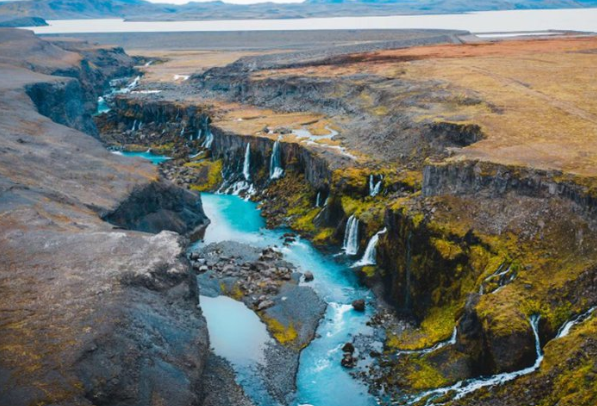Forget what you learned in elementary school geography: Earth might not have seven continents after all. Traditionally, we’ve been taught that the world is made up of Africa, Antarctica, Asia, Oceania, Europe, North America, and South America. However, new research suggests that this might not be the case.
A groundbreaking study published in the journal Gondwana Research posits that Earth actually has only six continents. This claim stems from an in-depth investigation into the geological processes behind the breakup of Europe and North America and how these landmasses have evolved over time.
Earth only has six continents, not seven, as we’ve all been taught – https://t.co/hHfobB5QtP https://t.co/ivA2qb5WIN
— Tony Rosado (@rpstranslations) August 8, 2024
The study’s lead author, Dr. Jordan Phethean of the University of Derby, explained that his team’s findings indicate that the North American and Eurasian tectonic plates have not yet fully separated, contrary to the traditional belief that they broke apart 52 million years ago. Instead, these plates are still stretching and are in the process of breaking apart, which means North America and Europe could be considered a single continent rather than two distinct ones.
The research focuses on Iceland, a volcanic island that was previously understood to have formed around 60 million years ago due to the mid-Atlantic ridge. This tectonic boundary, formed by the North American and Eurasian plates, was thought to have sparked the emergence of a hot mantle plume that ultimately created Iceland. However, by analyzing tectonic movements across the African continent, Phethean and his colleagues have challenged this theory and proposed a radical new idea.
They argue that Iceland, along with the Greenland-Iceland-Faroes Ridge (GIFR), contains geological fragments from both European and North American tectonic plates. This suggests that these regions are not isolated landforms but interconnected pieces of a larger continental structure. The scientists have even coined the term “Rifted Oceanic Magmatic Plateau” (ROMP) to describe this new geological feature, which could have significant implications for our understanding of the formation and separation of Earth’s continents.
Dr. Phethean has described the discovery as the Earth Science equivalent of finding the Lost City of Atlantis, stating that his team has uncovered “fragments of lost continent submerged beneath the sea and kilometers of thin lava flows.” Furthermore, the researchers have found striking similarities between Iceland and Africa’s volcanic Afar region. If their study is accurate, this would mean that the European and North American continents are still in the process of breaking apart and are therefore still linked.
Phethean acknowledges that his team’s findings are controversial but insists they are grounded in meticulous research. He admitted that “it is controversial to suggest that the GIFR contains a large amount of continental crust within it and that the European and North American tectonic plates have perhaps not yet officially broken up,” while stressing that his work supports these hypotheses.
What? Earth has six continents not seven, radical new study claims https://t.co/j9ltBfue3f pic.twitter.com/XIgU45QHxD
— tronny.x🔻 (@adorcharm) August 8, 2024
The research is still in its conceptual phase, and the team plans to conduct further tests on Iceland’s volcanic rocks to obtain more concrete evidence of an ancient continental crust. They are also employing computer simulations and plate tectonic modeling to better understand how the ROMP is formed.
This study follows Phethean’s earlier discovery of a hidden “proto-microcontinent” nestled between Canada and Greenland, a primitive landmass about the size of England that sits below the Davis Strait, just off Baffin Island. Phethean noted that “rifting and microcontinent formation are ongoing phenomena,” which help scientists better understand the behavior of continents and plate tectonics.
Key Points:
i. New Research Challenges Traditional Geography: A study published in Gondwana Research suggests Earth may only have six continents instead of the traditionally recognized seven.
ii. North America and Europe as One Continent: The study indicates that the North American and Eurasian tectonic plates have not fully separated, meaning North America and Europe could be considered a single continent.
iii. Iceland’s Geological Significance: Iceland, previously thought to have formed from the mid-Atlantic ridge, may contain geological fragments from both European and North American plates, suggesting it is part of a larger continental structure.
iv. Introduction of ROMP: The researchers coined the term “Rifted Oceanic Magmatic Plateau” (ROMP) to describe this newly proposed geological feature that could change our understanding of Earth’s continents.
v. Ongoing Research and Future Tests: The study is still in its conceptual phase, with plans for further tests and computer simulations to better understand the formation and separation of Earth’s continents.
Charles William III – Reprinted with permission of Whatfinger News

